Almost in the dumpster!!!
I was lucky enough to clean out a basement in Lafayette last month with a C&P, A Pearl and tons of support equipment. I have been up every night till the weeeeee hours giving myself a crash course in letterpress. I responded to the ad because I spent 15 years in front of a Macintosh computer. 7 of those years I sublet a space to One Heart Press in San Francisco. My company was Urban Digital Color and Gallery 16. I was responsible for creating the “Fine Art” printing process on the Iris Printer. Basically years of experimentation ended up with me building 20 or so “color lookup tables” that enabled artists and photographers to output continuous tone color to about 30 different types water color paper. Arches, Sommerset and so on. The maximum prints size was 3x4 feet. They call the Glicee prints now. I have no idea why. Any way, as the Gallery expanded I loved producing Fine Art Books. I would print out all the color imagery and Norman from One Heart Press would bang out the text in the corner on the letterpress. John would then hand bind the books or I would build precious little boxes for them. I was always jealous of Norman in the corner playing with that old beautiful piece of equipment. I loved the letterpress. I am so excited about finally setting up my own equipment on the farm I can hardly sleep lately. I have so many questions I don’t know where to begin. Anyway I loaded everything up about a month ago and when I was leaving I saw a five gallon bucket of rusty stuff in the dumpster. I grabbed it for some reason and here were a few things I found inside. How do the counters work? They were just balls of rust but I soaked them in EXRUST from www.kanolabs.com, This place has amazing stuff for the Letterpress industry. I have so many other things I need Identified. Should I post them here or under a different heading. Thanks in advance for answering my questions and helping me finally set up my own presses here in Dogtown California. Yes its really named Dogtown, CA. Population 31, It was 30 but we just had another Baby!!!YeaH!!!
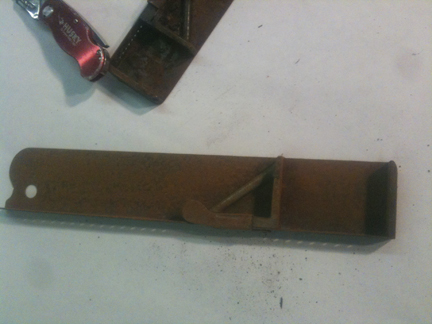
coposing before.jpg
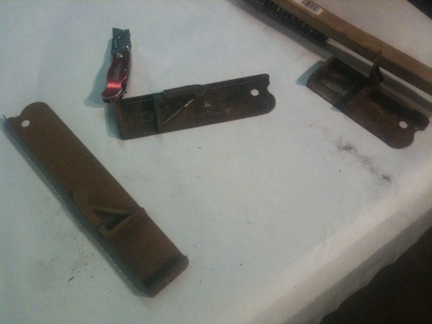
composing2before.jpg
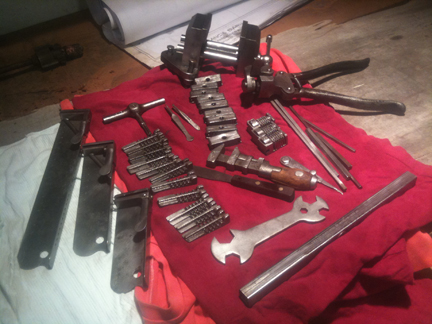
alltogether2.jpg
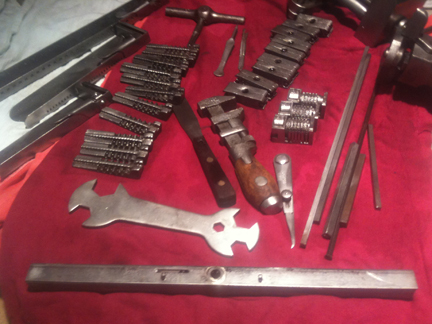
alltogether4.jpg
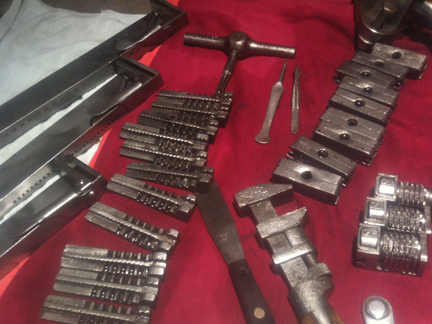
alltogether.jpg
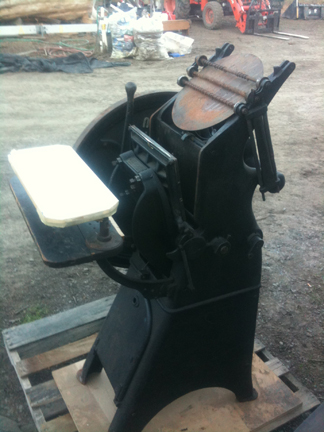
p1.jpg
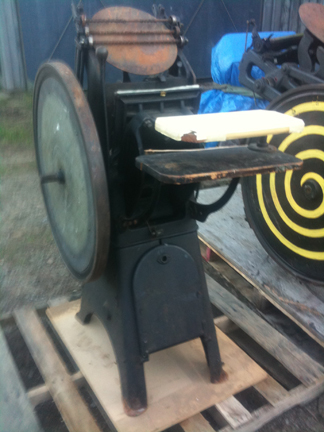
p2.jpg
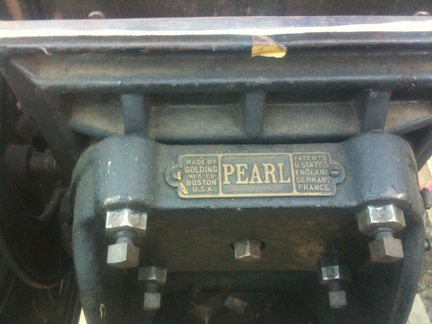
pplate.jpg

cp1.jpg
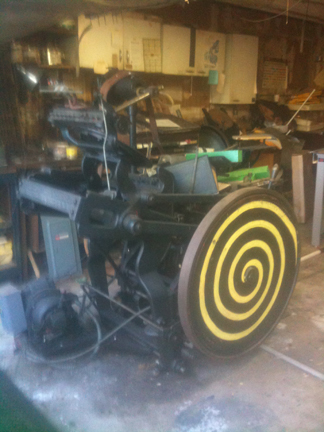
cp2.jpg

cpplate.jpg
Your counters are numbering machines, when the No. is depressed the number should change, they are for consecutive numbering of receipts, tickets or such. The wheels can go forward or some go backwards, each wheel has an oil hole beside it, the wheels can be turned by hand and you will see a cut out section next to the 5 on a backward numbering machine and a 4 on a forward, this is to get a drop of oil onto the shaft that runs thru the machine. They can still be bought new (over $100 each) but used only $10 to $20. Your c&p has a kluge feeder on it . Nice find, there are lots of people willing to answer your questions on this site so ask away. Good Luck Dick G.
If you are able to clean up those numbering machines to where the wheels are free and the plungers work, I’m impressed. Rust+numbering machines=no fun in Mudville.
I think the numbering machines are going to work again, that exrust is pretty amazing stuff. I will read the post again and try to see if the are moving freely. I found another one yesterday made in Italy it is different than the other three. Is the feeder worth resuscitating? Two people have told me to get it off and just hand feed. What do you guys think? I assume the long metal stick in the photo expands to hold all the furniture and type in the chase. It has all these numbers on it. Can you change settings on it so it expands more? What is the correct name for it? Thanks for the help I am studying hard to try to educate myself with the proper terminology so as to ask good questions. I have a feeling I will be doing this the rest of my life. I am going to finish setting up the space and then attempt some test printing so off I go. I will post more picts of what I found tomorrow. Thanks again for the help.
The feeder looks like a kluge feeder, if you are planning to print short runs you colud remove the feeder and hand feed it. Althouigh with the kluge feeder you can disconnect ir and hand feed the press then simple engage it and use the auto feed if you want, so it might be worth trying to get it running. Good Luck Dick G.
You must be talking about the quoin. I see one Challenge hi-speed quoin, and a key for it, and several Wickersham quoins, which use a different key. Any form needs to be locked up from two directions, and it makes sense to use the same quoins on both sides (the sides away from the guide edges of the sheet). The Wickersham key can be improvised out of square stock, bent to an L-shape for a handle.
There are lots of standard texts that will help you learn the basics, especially how to lock up a form in a chase. Don’t rely on the Internet alone; there are some truly frightening examples of bad lockup online.
The long metal stick is a “composing stick”. You adjust the part that slides to the width of the text you would like to set, and then start gathering the metal type (from a type case) that makes up your line of text.
Search Youtube for “composing stick” and you will find a video about it. You could also check out Don Black’s channel, where there are a lot of interesting videos about letterpress: http://www.youtube.com/user/DonBlackLetterpress